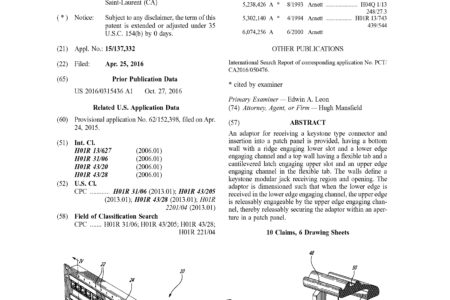
Skill: Fontaine

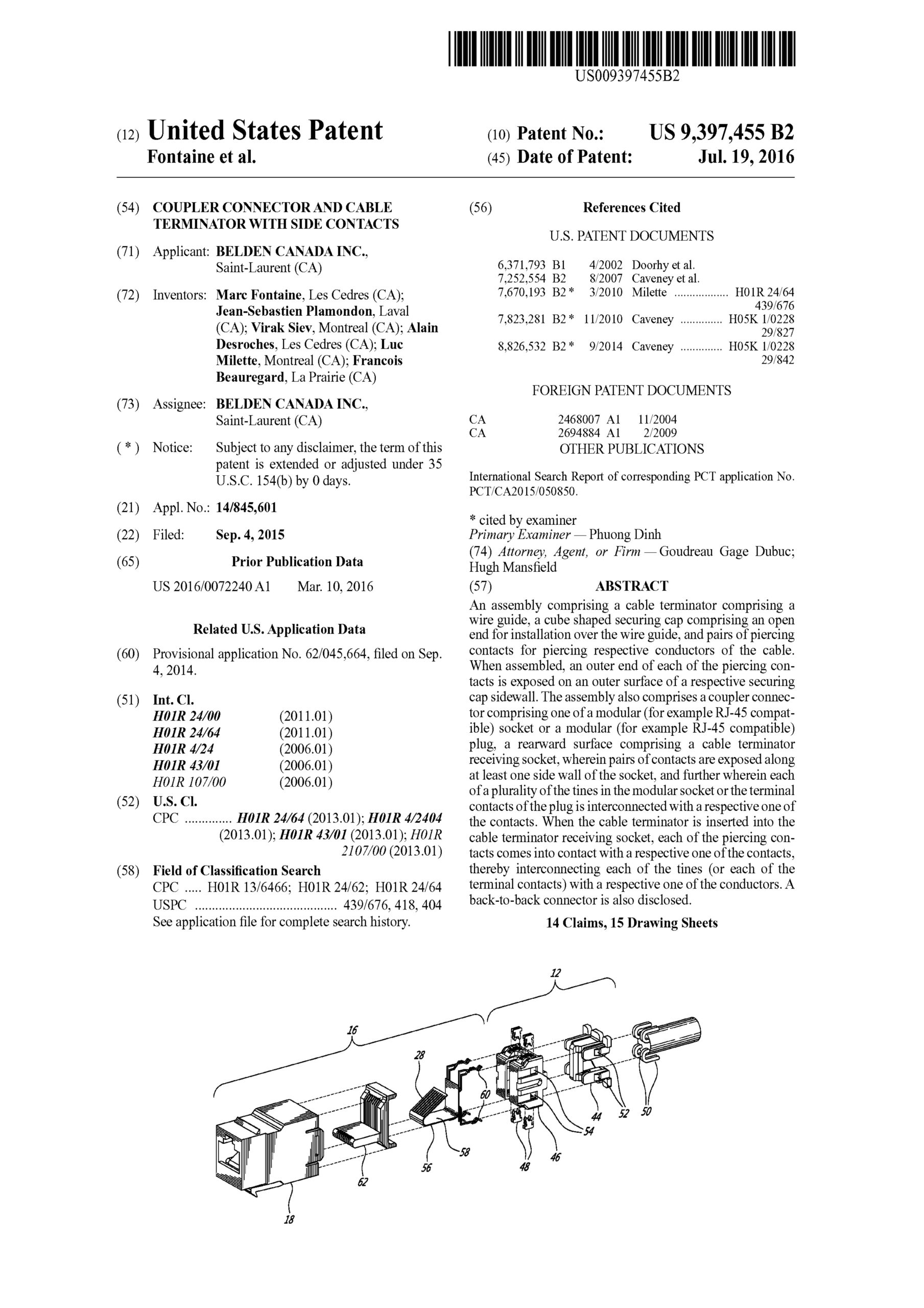
US Patent No. 9,397,455
Coupler connector and cable terminator with side contacts
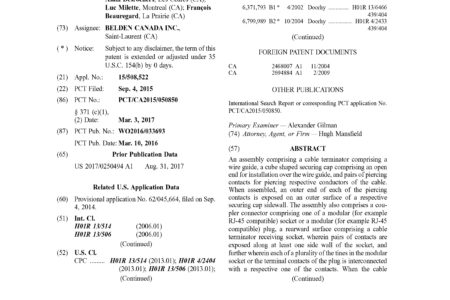
US Patent No. 9,865,960
Coupler connector and cable terminator with side contacts
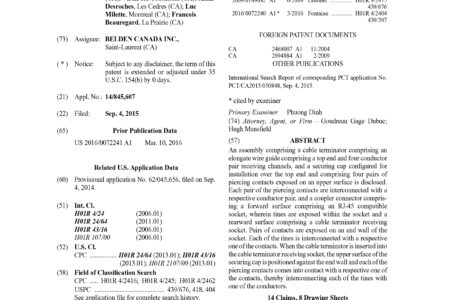
US Patent No. 9,413,125
Coupler connector and cable terminator with end contacts
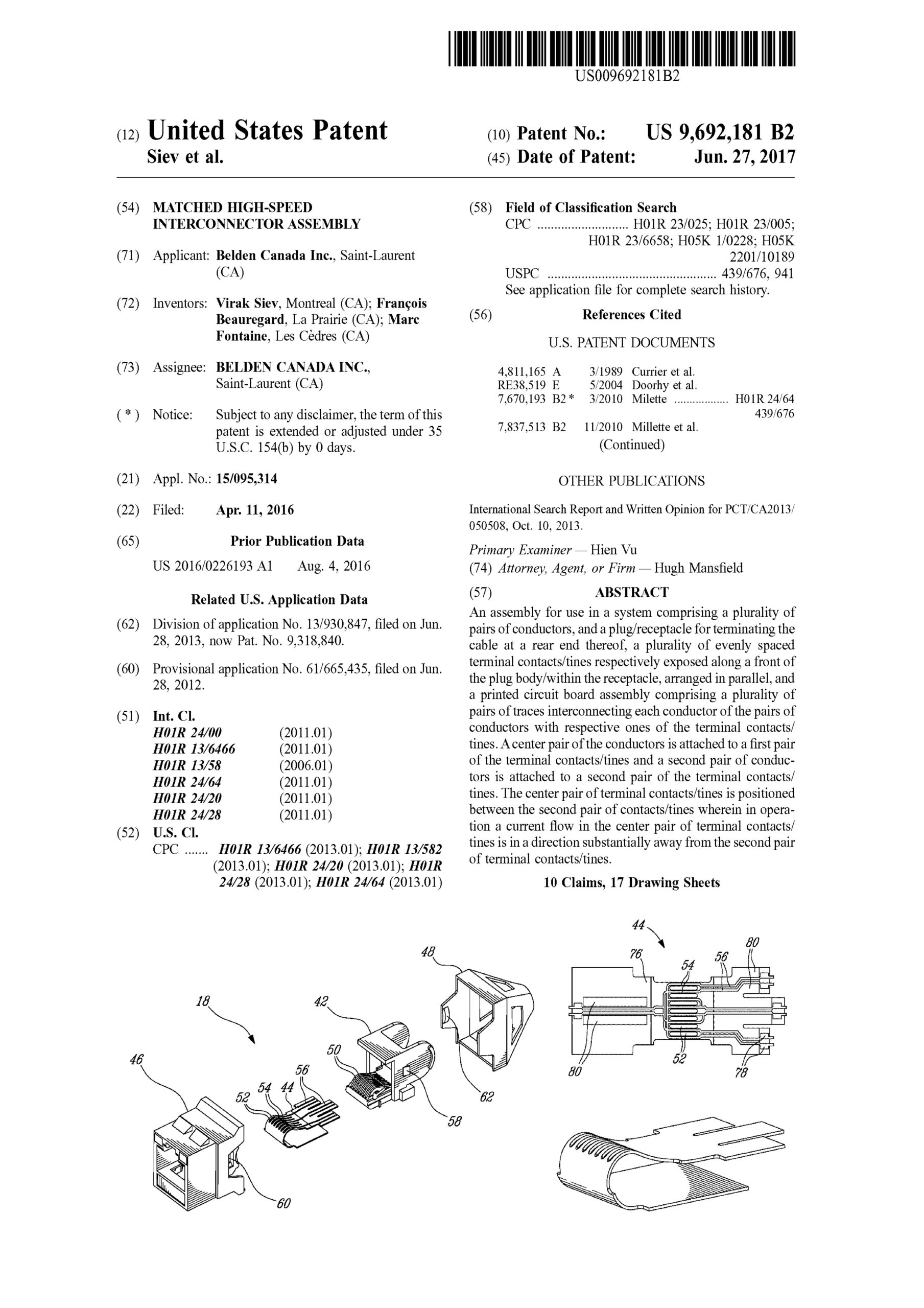
US Patent No. 9,692,181
Matched high-speed interconnector assembly
US Patent No. 9,318,840
Matched High-Speed Interconnector Assembly
An assembly for use in a system comprising a plurality of pairs of conductors, and a plug/receptacle for terminating the cable at a rear end thereof, a plurality of evenly spaced terminal contacts/tines respectively exposed along a front of the plug body/within the receptacle, arranged in parallel, and a printed circuit board assembly comprising a plurality of pairs of traces interconnecting each conductor of the pairs of conductors with respective ones of the terminal contacts/tines. A center pair of the conductors is attached to a first pair of the terminal contacts/tines and a second pair of conductors is attached to a second pair of the terminal contacts/tines. The center pair of terminal contacts/tines is positioned between the second pair of contacts/tines wherein in operation a current flow in the center pair of terminal contacts/tines is in a direction substantially away from the second pair of terminal contacts/tines.